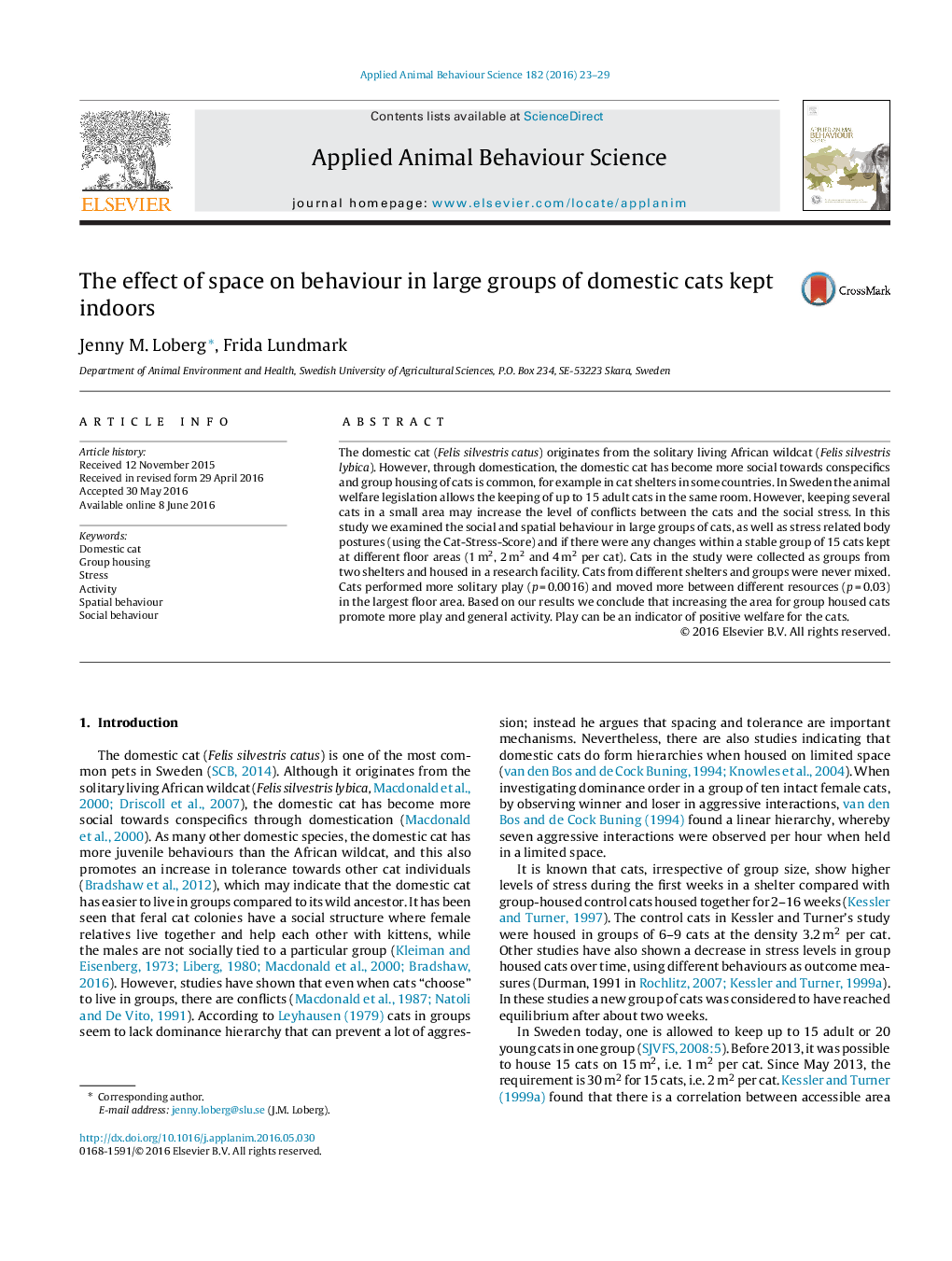| کد مقاله | کد نشریه | سال انتشار | مقاله انگلیسی | نسخه تمام متن |
|---|---|---|---|---|
| 4522331 | 1625324 | 2016 | 7 صفحه PDF | دانلود رایگان |
• We observed six groups of 15 domestic cats housed at three different available floor areas.
• We recorded social interactions between cats, Cat-Stress-Score and use of resources.
• Cats performed more solitary play, had more friendly interactions and moved more between different resources with increasing space.
• There was no difference in Cat-Stress-Score between different areas.
The domestic cat (Felis silvestris catus) originates from the solitary living African wildcat (Felis silvestris lybica). However, through domestication, the domestic cat has become more social towards conspecifics and group housing of cats is common, for example in cat shelters in some countries. In Sweden the animal welfare legislation allows the keeping of up to 15 adult cats in the same room. However, keeping several cats in a small area may increase the level of conflicts between the cats and the social stress. In this study we examined the social and spatial behaviour in large groups of cats, as well as stress related body postures (using the Cat-Stress-Score) and if there were any changes within a stable group of 15 cats kept at different floor areas (1 m2, 2 m2 and 4 m2 per cat). Cats in the study were collected as groups from two shelters and housed in a research facility. Cats from different shelters and groups were never mixed. Cats performed more solitary play (p = 0.0016) and moved more between different resources (p = 0.03) in the largest floor area. Based on our results we conclude that increasing the area for group housed cats promote more play and general activity. Play can be an indicator of positive welfare for the cats.
Journal: Applied Animal Behaviour Science - Volume 182, September 2016, Pages 23–29
